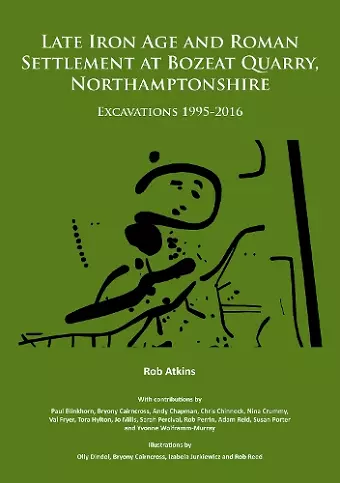Late Iron Age and Roman Settlement at Bozeat Quarry, Northamptonshire: Excavations 1995-2016
Excavation Findings from Bozeat Quarry's Historical Settlements
Format:Paperback
Publisher:Archaeopress
Published:31st May '18
Should be back in stock very soon

This book explores archaeological findings from Bozeat Quarry, detailing Late Iron Age and Roman settlements, their structures, and artifacts discovered during excavations.
This comprehensive volume, Late Iron Age and Roman Settlement at Bozeat Quarry, Northamptonshire: Excavations 1995-2016, presents the findings from extensive archaeological work conducted by MOLA over a two-decade period. Covering an area of 59 hectares, the excavations reveal significant evidence of settlement from the Late Iron Age through to the Roman period. The earliest features identified include a Bronze Age to Iron Age cremation burial, suggesting a rich historical tapestry in the northern section of the site.
As the investigation progressed, a well-organized farmstead emerged in the southern part of Bozeat Quarry, characterized by roundhouses, enclosures, and boundary ditches, indicative of a thriving settlement. The volume details the transition of this farmstead into two separate settlements by the early 1st century AD, highlighting their strategic locations on a west-facing slope. The Northern Settlement, though occupied for a brief period, was notable for its pottery production, featuring the largest collection of pottery kilns from this era discovered in the Upper Nene Valley.
The Southern Settlement continued to flourish into the Roman period, with a wealth of artifacts unearthed, including coins and brooches that may point to the presence of a shrine or temple. The findings from Late Iron Age and Roman Settlement at Bozeat Quarry, Northamptonshire: Excavations 1995-2016 provide invaluable insights into the socio-economic activities of the time, including pastoral farming and the development of settlement structures, while also hinting at later Saxon occupation in the area.
ISBN: 9781784918958
Dimensions: 290mm x 205mm x 10mm
Weight: 738g
200 pages